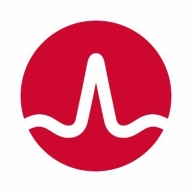

AppNeta by Broadcom and LogicMonitor are competing in the network monitoring and performance management category. AppNeta has an advantage in network diagnostics, while LogicMonitor stands out with its advanced monitoring and analysis capabilities.
Features: AppNeta offers detailed network diagnostics, network path performance analytics, and insights into network challenges. LogicMonitor provides extensive monitoring across IT environments, customization, and scalability. AppNeta focuses on network performance, and LogicMonitor covers network, servers, and applications.
Room for Improvement: AppNeta could enhance its versatility beyond network performance, provide more comprehensive IT environment coverage, and increase customization options. LogicMonitor might improve deployment simplicity, lessen initial cost impact, and streamline specialized network performance analysis.
Ease of Deployment and Customer Service: AppNeta is known for straightforward deployment and network-specific guidance. LogicMonitor offers a robust support system, despite a more complex deployment process.
Pricing and ROI: AppNeta generally offers a cost-effective setup with quicker ROI due to its focus on network issues. LogicMonitor's higher costs are balanced by significant long-term ROI with comprehensive features.
| Product | Market Share (%) |
|---|---|
| LogicMonitor | 1.5% |
| AppNeta by Broadcom | 0.7% |
| Other | 97.8% |


| Company Size | Count |
|---|---|
| Small Business | 5 |
| Midsize Enterprise | 5 |
| Large Enterprise | 8 |
| Company Size | Count |
|---|---|
| Small Business | 11 |
| Midsize Enterprise | 10 |
| Large Enterprise | 10 |
AppNeta is the leader in proactive end-user performance monitoring solutions built for the distributed digital enterprise. With AppNeta, IT and Network Ops teams can assure continuous and exceptional delivery of business-critical applications. AppNeta’s SaaS-based solutions give IT teams essential application and network performance data, allowing them to constantly monitor user experience across any application, network, data center or cloud.
For more information, visit www.appneta.com.
LogicMonitor offers flexible IT monitoring with customizable dashboards and robust alerting capabilities. It integrates seamlessly with third-party apps like ServiceNow and provides a single-pane view for diverse IT environments, aiding in proactive issue resolution and enhancing operational efficiency.
LogicMonitor stands out with its capability to monitor diverse infrastructures including Cisco Voice systems, data centers, and virtual environments. Supporting servers, storage, networking devices, and applications, it provides seamless integration with cloud services like AWS and Azure. Users leverage its scalability and flexibility, benefiting from dynamic thresholds, anomaly detection, and detailed visualization. All these features contribute to improved management of IT assets and streamlined operations. Users suggest improvements in mapping, reporting, and automation for remediation, desiring more customizations and an expansive application performance monitoring toolset.
What are LogicMonitor's key features?LogicMonitor is widely implemented across industries, providing monitoring for infrastructure in sectors like telecommunications, cloud computing, and managed services. Managed service providers particularly value its ability to track client environments, deliver proactive alerts, and generate comprehensive reports, while its integration with cloud platforms like AWS and Azure offers users centralized management and visibility into IT assets worldwide.
We monitor all Network Monitoring Software reviews to prevent fraudulent reviews and keep review quality high. We do not post reviews by company employees or direct competitors. We validate each review for authenticity via cross-reference with LinkedIn, and personal follow-up with the reviewer when necessary.